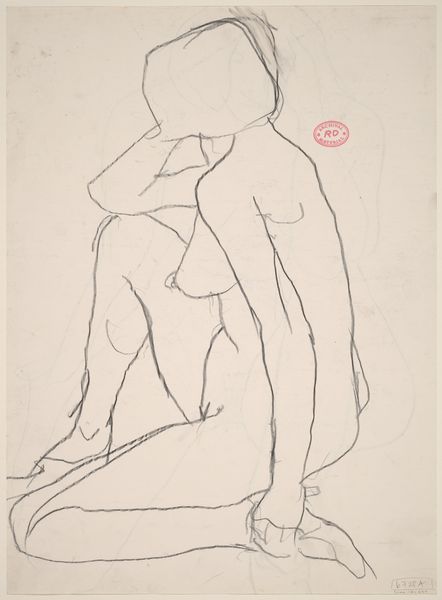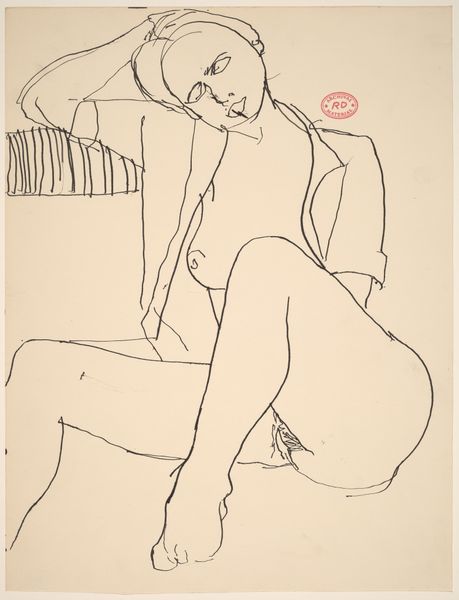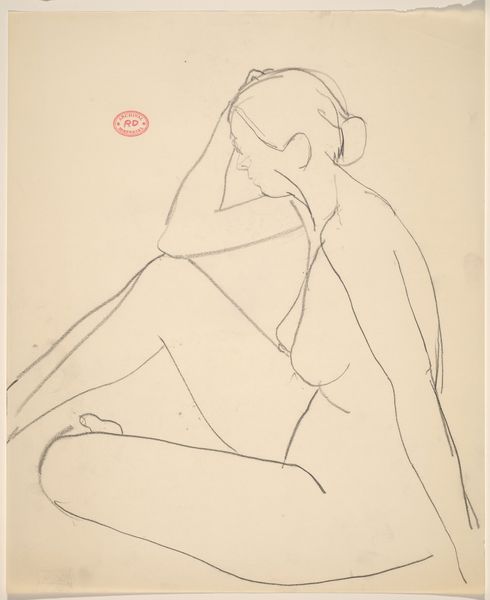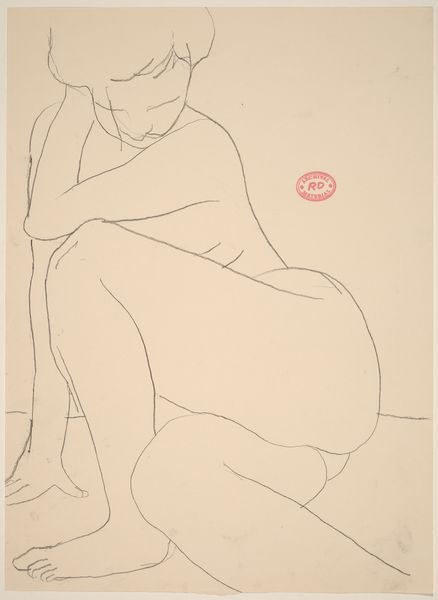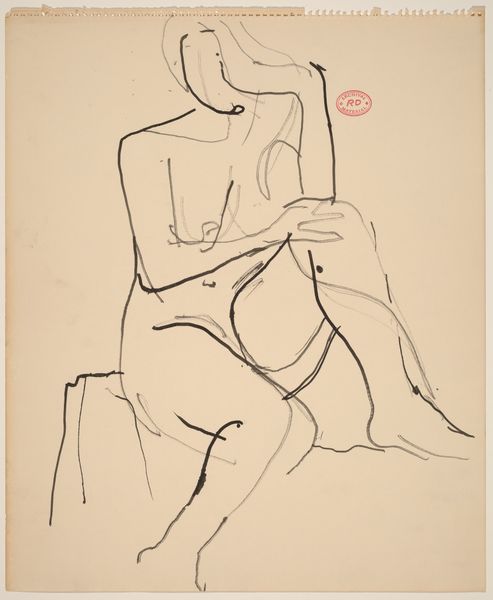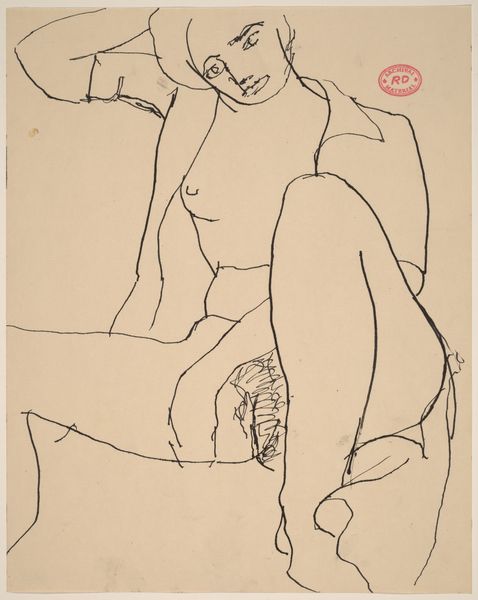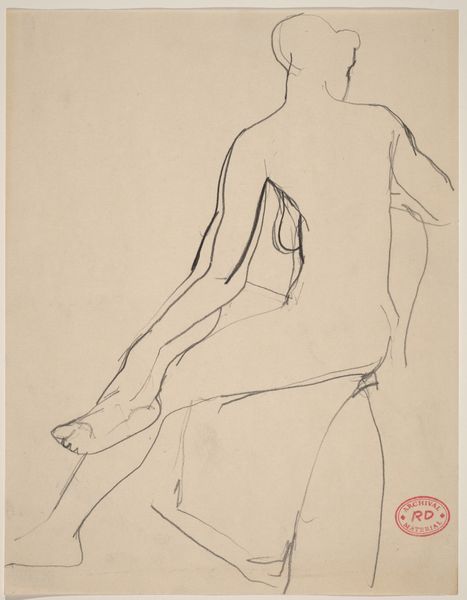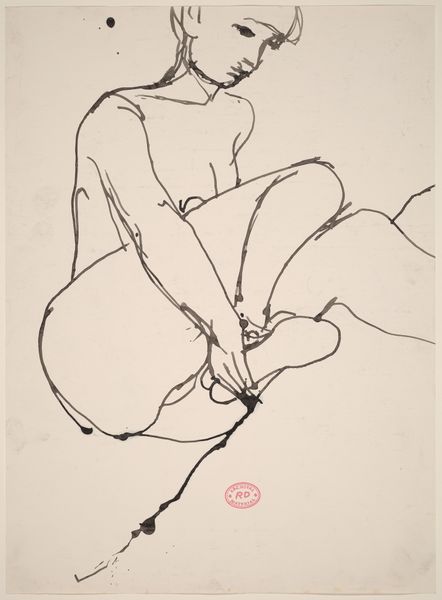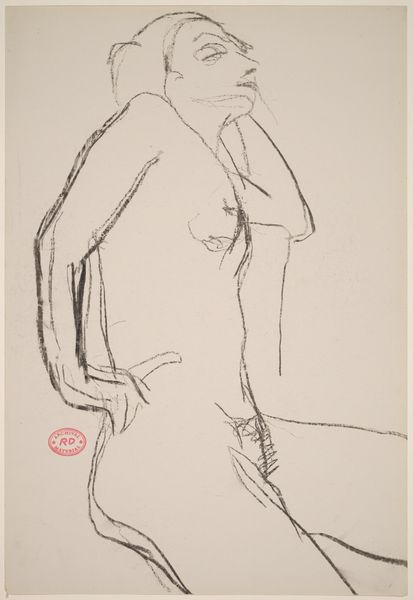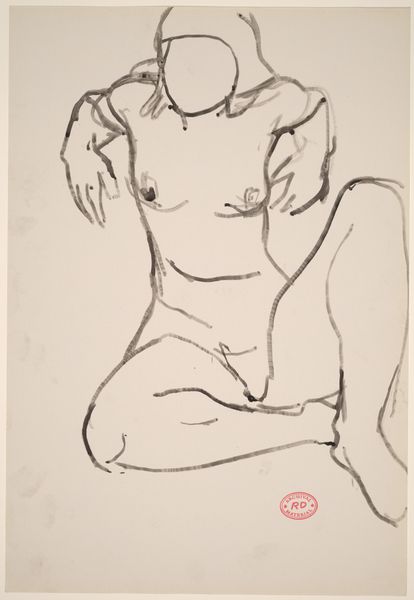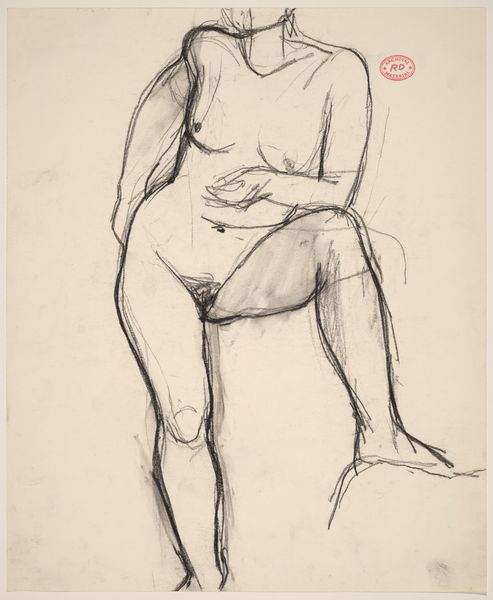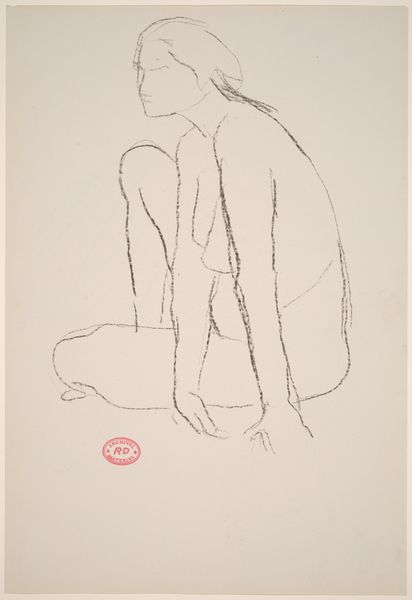![Untitled [standing nude with her right foot on a stool] by Richard Diebenkorn](/_next/image?url=https%3A%2F%2Fd2w8kbdekdi1gv.cloudfront.net%2FeyJidWNrZXQiOiAiYXJ0ZXJhLWltYWdlcy1idWNrZXQiLCAia2V5IjogImFydHdvcmtzLzMwOWZkMDBjLWY4NWMtNDQzMy04NThmLWI0ZWMxOWRlNjFlNS8zMDlmZDAwYy1mODVjLTQ0MzMtODU4Zi1iNGVjMTlkZTYxZTVfZnVsbC5qcGciLCAiZWRpdHMiOiB7InJlc2l6ZSI6IHsid2lkdGgiOiAxOTIwLCAiaGVpZ2h0IjogMTkyMCwgImZpdCI6ICJpbnNpZGUifX19&w=3840&q=75)
Untitled [standing nude with her right foot on a stool] 1955 - 1967
0:00
0:00
drawing, pencil
#
portrait
#
drawing
#
figuration
#
bay-area-figurative-movement
#
pencil drawing
#
pencil
#
nude
#
modernism
Dimensions: overall: 35.5 x 25 cm (14 x 9 13/16 in.)
Copyright: National Gallery of Art: CC0 1.0
Curator: This work is an untitled drawing by Richard Diebenkorn, dating roughly from 1955 to 1967. The medium is simple: pencil on paper. What strikes you first? Editor: There's a real intimacy to it, even in its seeming unfinished state. The gaze of the figure, resting, pondering something. The stool anchors her, but her pose suggests vulnerability and strength simultaneously. Curator: Indeed. Diebenkorn, while often associated with abstract expressionism, particularly his Ocean Park series, consistently returned to figuration throughout his career. We need to consider what it meant for an artist primarily associated with abstraction to frequently depict the nude, and to draw nudes who possess what can seem like a powerful, even melancholic gaze. Editor: It’s a reclaiming, in some ways, from the conventional male gaze, don’t you think? She seems almost unaware of the viewer, locked in her own thoughts. It resists the objectification so often present in nude studies of this period. There is very little of the male perspective informing the image. It has such candor and introspection. Curator: That's a fascinating reading. The drawing’s sparseness emphasizes this. The lack of background removes the figure from any contextualizing narrative. It’s raw, immediate. Also note that at the time Diebenkorn was developing the drawing, social constructions of women were evolving to embrace agency, though they remained stifled within patriarchal frameworks. So in many ways Diebenkorn, perhaps unwittingly, offers this agency through the thoughtful representation of the woman’s pensive interior. Editor: It is striking how his economical line still manages to suggest volume and weight. Her arm resting on her knee, the curve of her back—it's all beautifully rendered. I wonder about the institutional forces influencing the display and understanding of pieces such as this one—is it possible to properly show such intimacy in a gallery context? Or do such environments only reduce its emotional impact? Curator: Those are vital questions that we constantly confront. Highlighting the art's ability to elicit such reflection may be the answer, by turning the gallery itself into a laboratory for thinking through issues around objectification, artistic agency and representation. Editor: Thank you, that was enlightening. Curator: And for me as well.
Comments
No comments
Be the first to comment and join the conversation on the ultimate creative platform.

